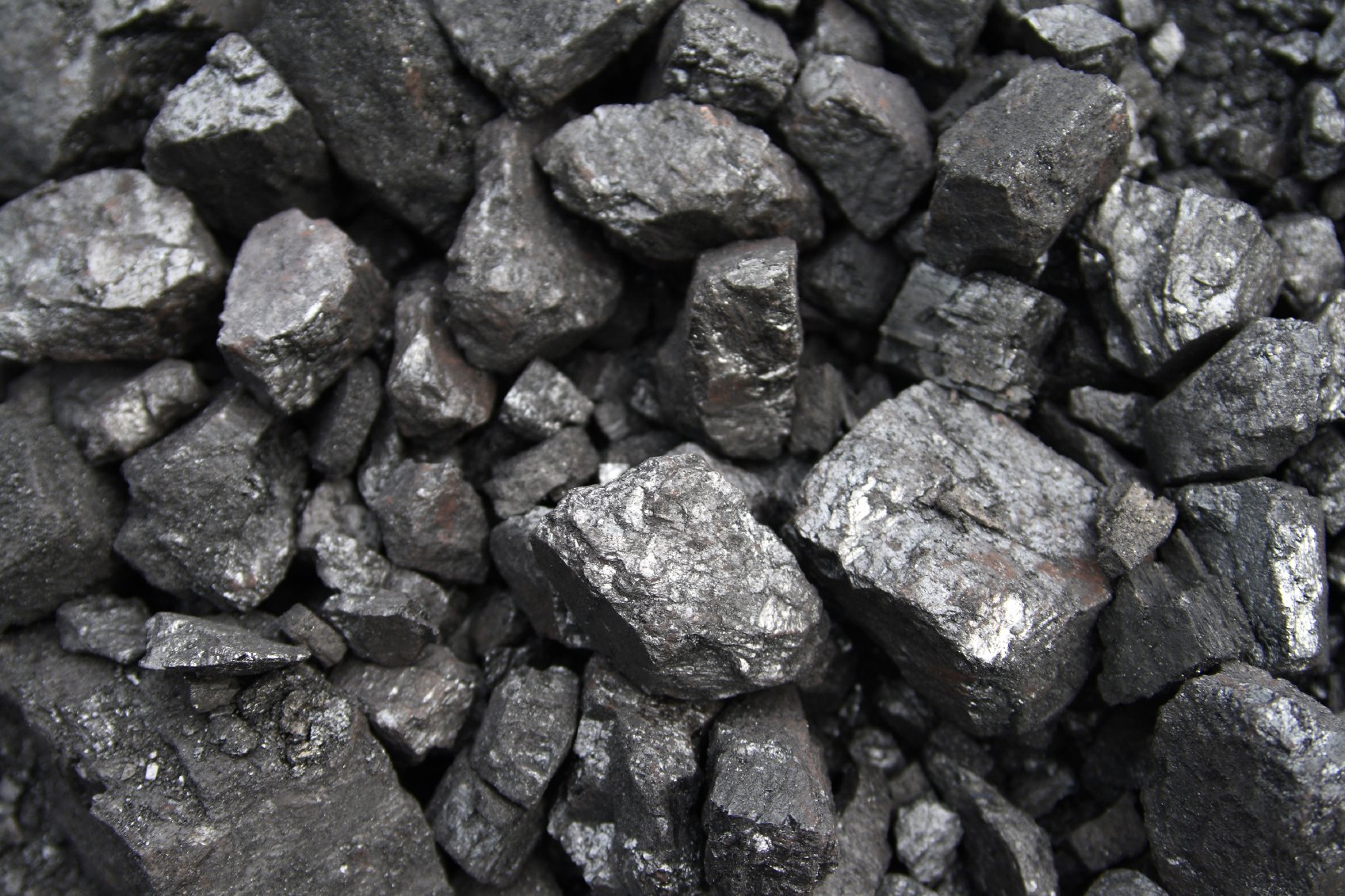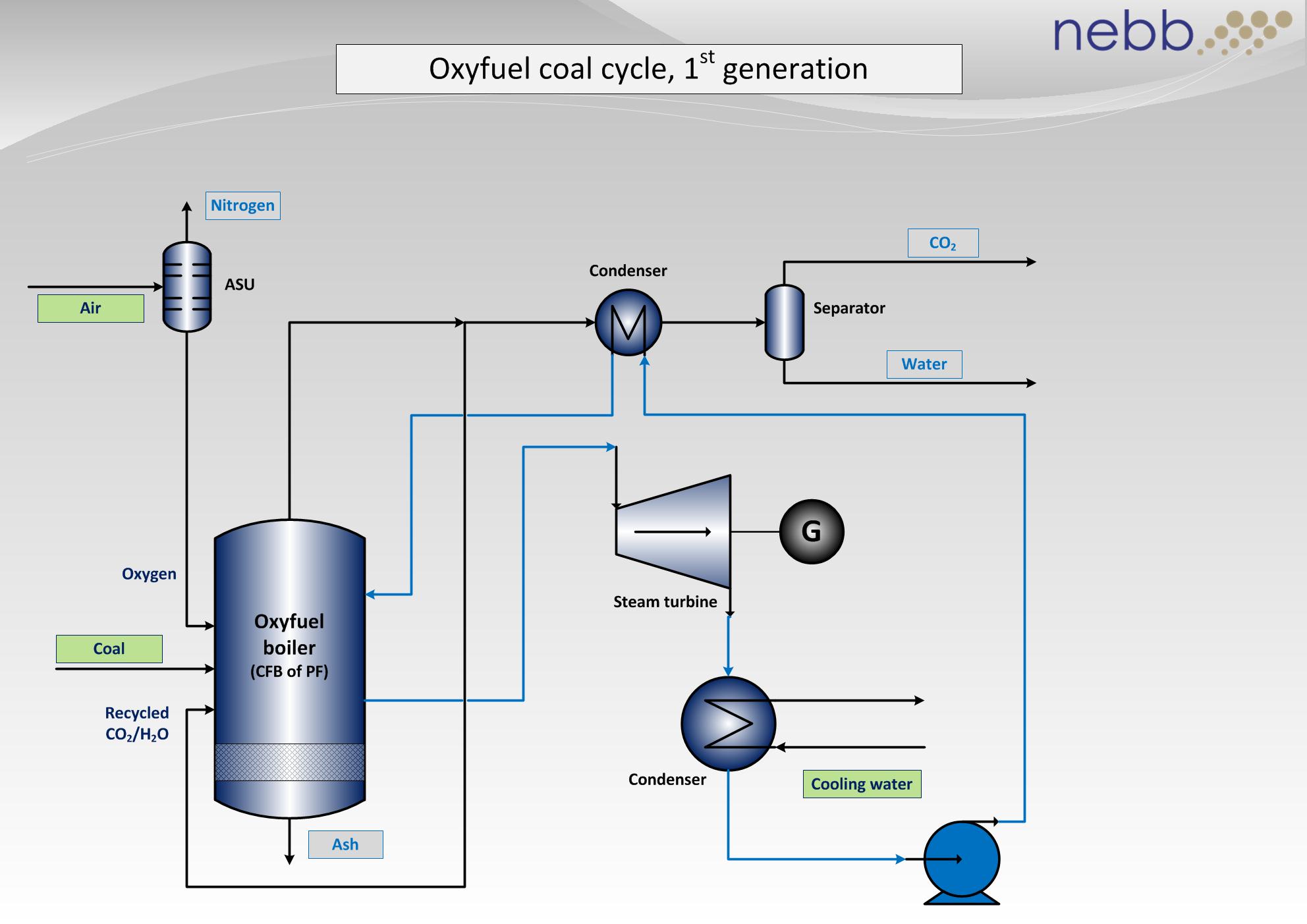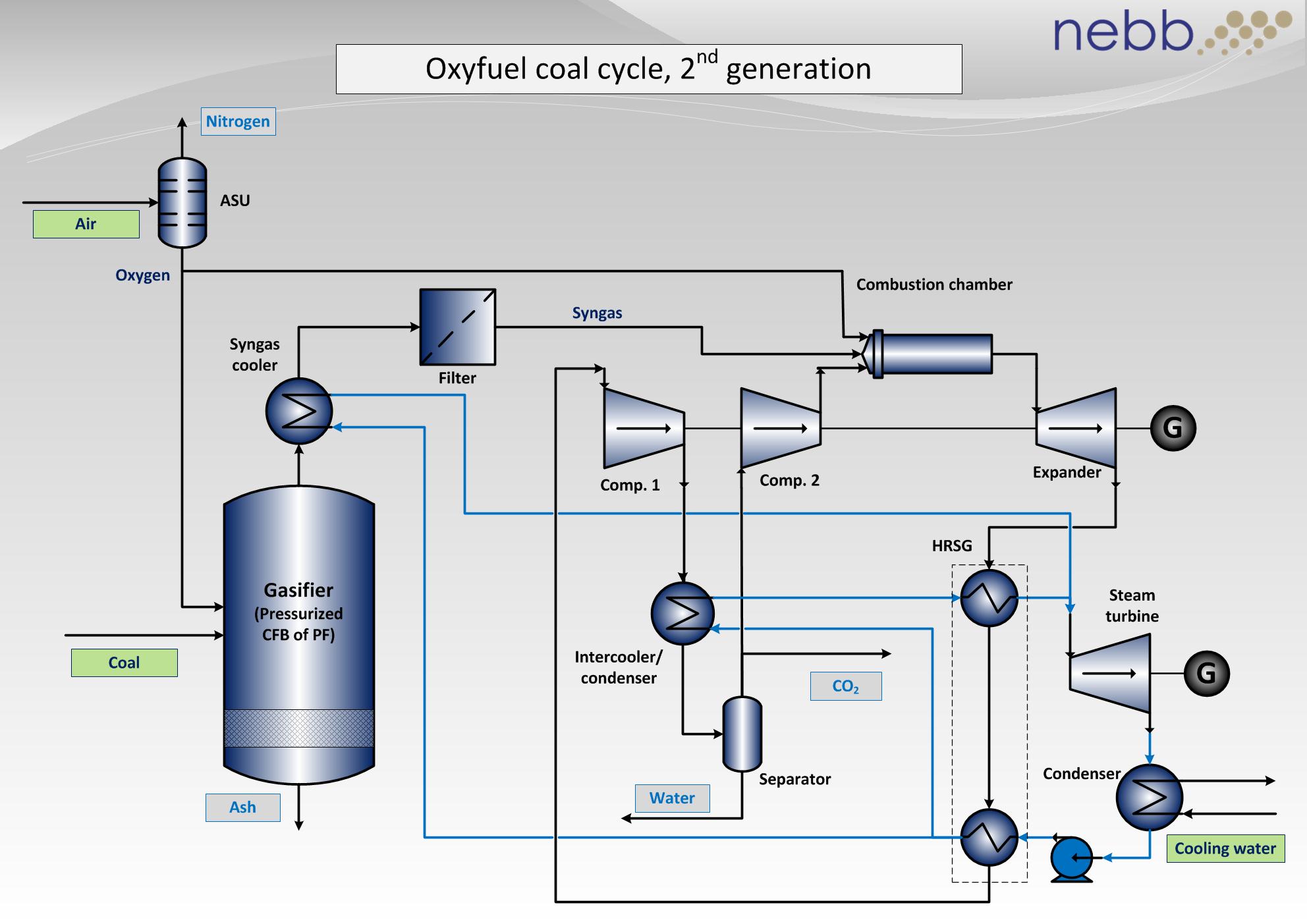
Coal is a dominant carbon-containing fuel source for power production in most parts of the world. It is thus also responsible for most of the CO2 emissions from power production. Nebb has developed a process for oxyfuel power production based on solid fuels. The fuels may be, for example, coal or biomass.
Oxyfuel coal processes may be divided into 1st and 2nd generation. 1st generation is similar to a conventional power plant, but where air in the combustion process is replaced by a mixture of pure oxygen and recycled flue gas. This process is illustrated in the figure below.

In a 2nd generation oxycoal process, the coal is first gasified (converted to syngas). Then the syngas is fed into a combined cycle gas turbine process. The overall efficiency is generally better with a 2nd generation type process.
The figure below is an example of a 2nd generation oxyfuel coal power production process. Oxygen from the Air Separation Unit (ASU) is used in both the gasifier unit and in the gas turbine combustion chamber. The gasifier unit will normally be a pressurised pulverised fuel or circulating fluidised bed type.
The syngas from the gasifier is cooled and particles are removed. Pollutants like sulphur or mercury may be removed before or after the gas turbine process.
Depending on the pressure in the gasification process, the syngas may need to be compressed before it is fed to the gas turbine combustion chamber. In the combustion chamber, the gas is burnt in pure oxygen. Recycled flue gas is used to cool the combustion chamber. The gas turbine process is a combined cycle, similar to the Nebb Cycle.
The overall process is similar to the Integrated Gasification Combined Cycle (IGCC). The main difference is that in IGCC, the gas turbine is fuelled by syngas and air (or hydrogen, air and nitrogen, if CO2 is captured), while in the 2nd generation oxyfuel it is fuelled by syngas, oxygen and recycled flue gas.
Nebb provide total solutions for automation, electrical and information systems to a number of industries world-wide, including process industry, food & pharma, marine, energy, subsea, and PMC.
Our core competence lies within automation, electrical, instrumentation, SCADA, software, and digitalisation.
[fa icon="phone"] +47 66908300
[fa icon="envelope"] sales@nebb.com
[fa icon="envelope"] general@nebb.com
[fa icon="home"] Solbråveien 43, Asker Norway